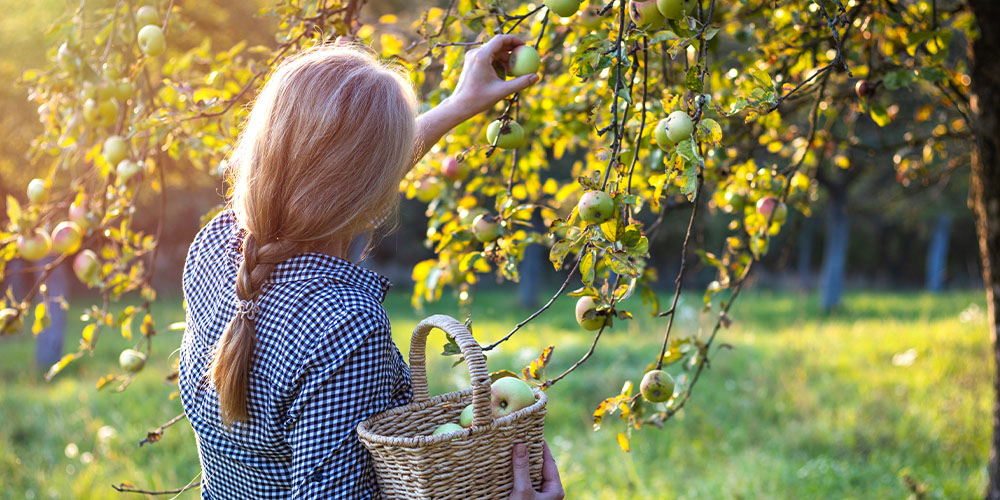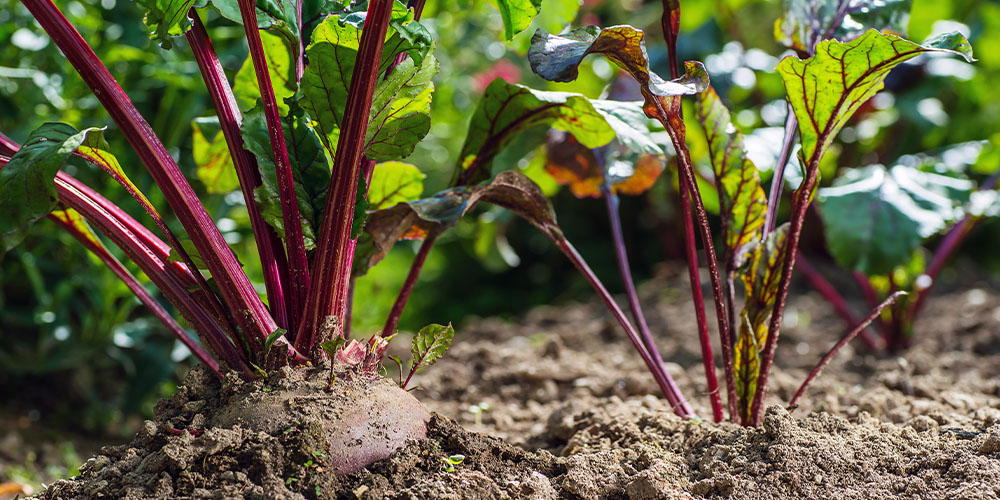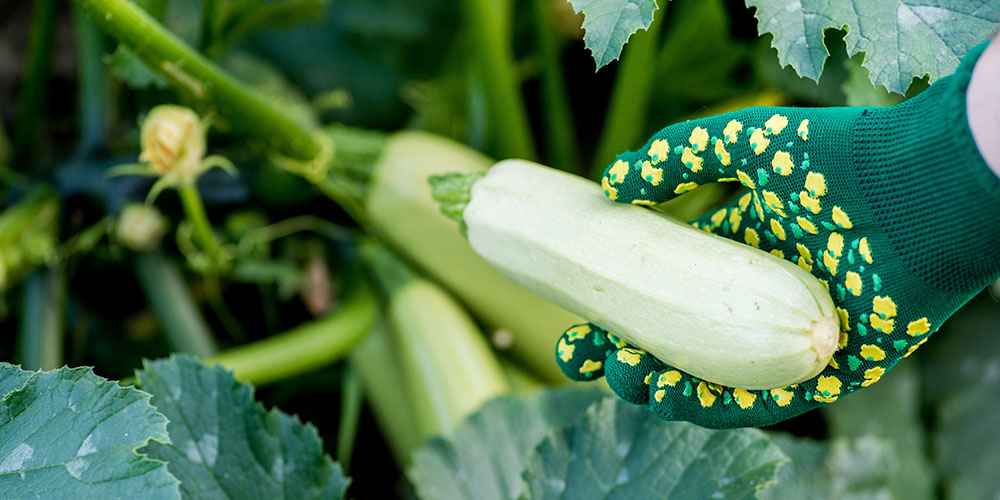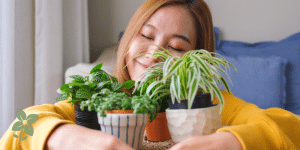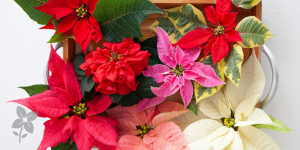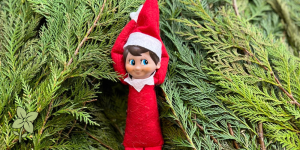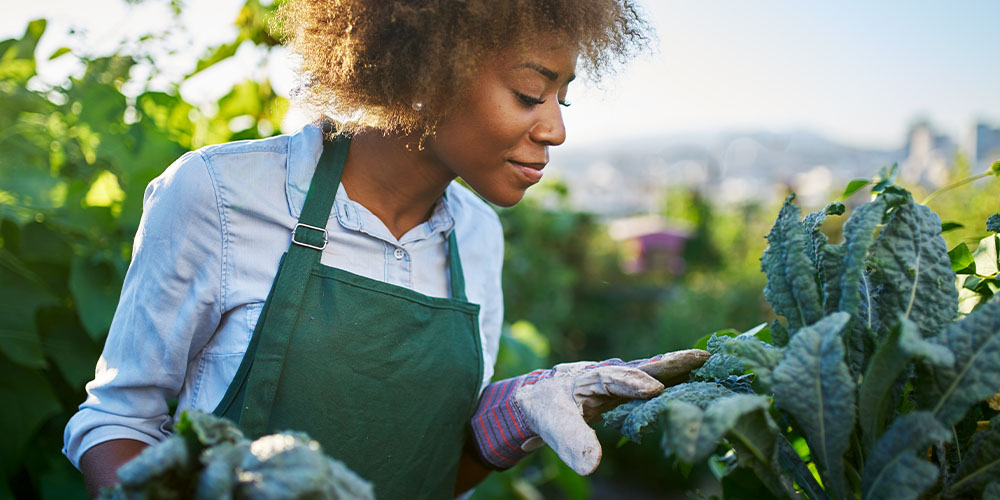
Knowing when and how to harvest crops in real life isn’t quite as simple as in Stardew Valley. Different fruit and vegetable plants have different features and signs to watch for as they approach ripeness. Harvesting your crops too early or leaving them on the plant for too long can spoil your delicious edibles, so it’s essential to pay close attention to your plants and time your harvest accordingly.
Here’s How to Harvest All of Your Favourite Crops
From apples to zucchinis, here’s a guide on what to look for when determining if your crops are ready for harvest!
Harvesting Apples
Apples are one of the best crops to grow in Edmonton because the yield is so massive! Anyone with an apple tree knows how easy it is to fill an entire shopping bag””or ten.
Apples are ready for picking when you can easily twist them off their branch. You shouldn’t have to tug at them, and if it takes a chunk of branch and leaves off with it, it’s probably too early. You can also check with a good old-fashioned taste test or by slicing the apple in half. If the seeds are brown, it’s ripe and ready!
Harvesting Berries
Berries are very fast-maturing crops, so you may need to pick them as often as every two days once your plants start fruiting. Pick them when they’ve developed a rich colour but are firm when you squeeze them.
Harvesting Root Vegetables
Most root vegetable crops are ready to be pulled about 7″“8 weeks after planting. The exception is radishes, which can mature in one month! While it may be tempting to let your root vegetables get as big as possible, they’re sweeter and more flavourful when they’re smaller, so it’s good to find a middle ground.
The crown of root crops usually sits close to the soil surface, so you can remove a bit of soil to get an idea of the diameter of your root. The leaves of your plant will darken, and the stems will thicken once they reach maturity.
Harvesting Herbs
Culinary herbs are one of the easiest and most rewarding crops to grow, especially if you aren’t too confident in your gardening skills. Once your plant has reached a reasonable size, you can continue harvesting until frost! Our general rule: don’t remove more than one-third of the leaves at a time, so your plant won’t get stressed and can continue to photosynthesize properly. Remove flower buds from your herb plants to encourage them to make more leaves instead.
Harvesting Tomatoes
By far our favourite vegetable crop to grow, tomatoes have incredibly high yields and are super versatile! You can pick your tomatoes right when they develop their colour! Don’t leave them on the plant longer than needed””this can increase the risk of the fruit splitting. If you pick your tomatoes while they’re still a bit unripe but are showing a slight flush of colour, you can place them on a sunny windowsill to continue ripening.
Harvesting Squash
Size is usually a good indicator of ripeness for squash. Similar to root vegetables, these crops taste better when they’re on the smaller side. When winter squash have deepened in colour, and their rind is firm and difficult to pierce with your fingernail, they’re ready to be picked. Zucchinis and other summer squashes have thin skin, so skip the fingernail test. We like to wait until our zucchinis are about 8 inches long before picking.
Harvesting Peppers
These spicy little numbers are such a fun crop to cultivate! Peppers are good to go once they’ve developed their mature colour. If you’re growing green peppers like jalapeños, wait for their skin to darken. Your peppers will be hotter if they get lots of bright sunshine, so if you want them to be milder, you can grow them in containers and move them to the shade during the afternoon.
If you have any more questions about how to harvest crops in Alberta, feel free to check in with us at Salisbury Greenhouse in Sherwood Park and St. Albert! We have plenty of experience growing edibles””everything from the classics to the cool, rare cultivars. We’re big gardening geeks over here, so we’re always happy to share our knowledge.

